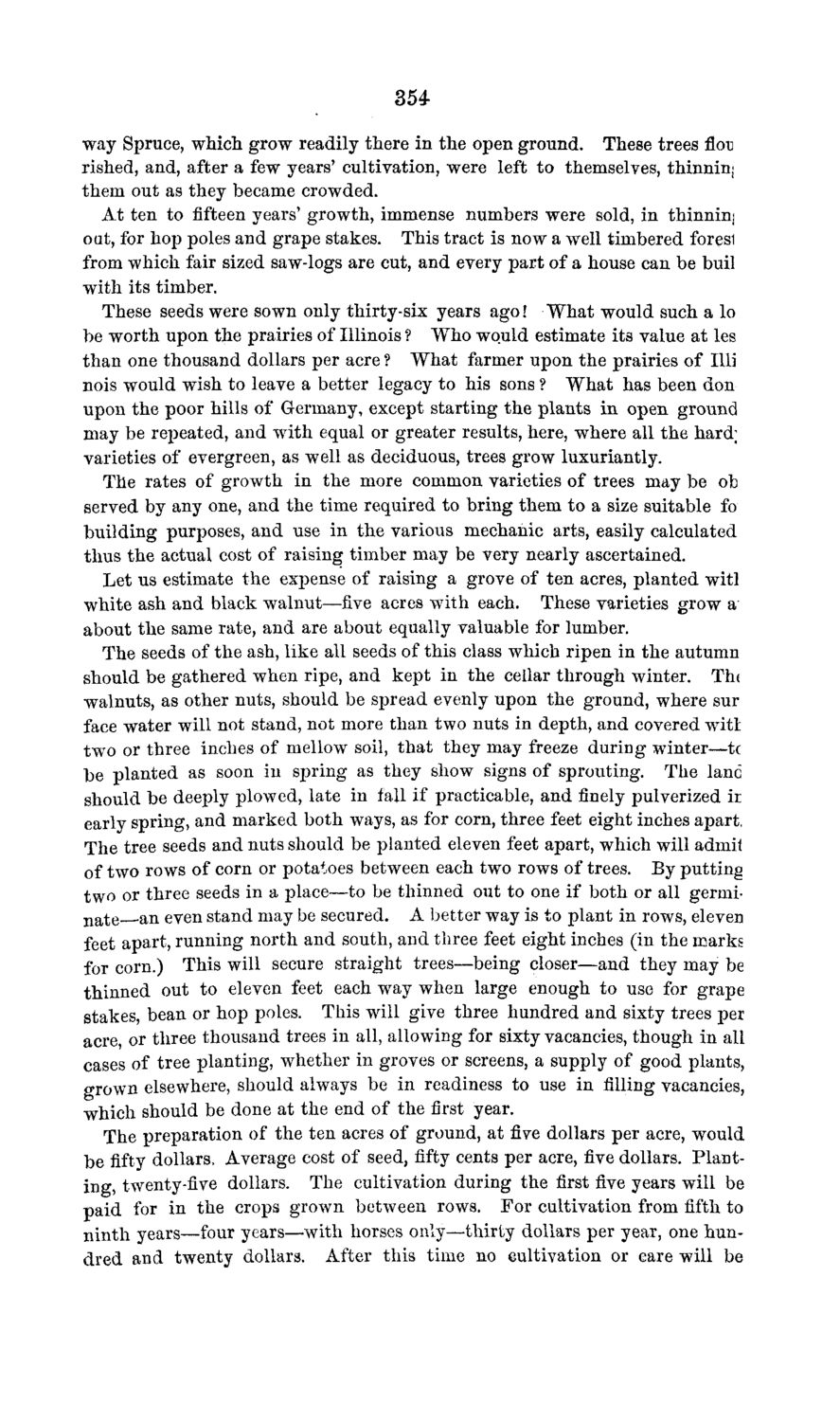| |
| |
Caption: Board of Trustees Minutes - 1869
This is a reduced-resolution page image for fast online browsing.

EXTRACTED TEXT FROM PAGE:
354 way Spruce, which grow readily there in the open ground. These trees floi] rished, and, after a few years' cultivation, were left to themselves, thinninj them out as they became crowded. At ten to fifteen years' growth, immense numbers were sold, in thinnini oat, for hop poles and grape stakes. This tract is now a well timbered foresl from which fair sized saw-logs are cut, and every part of a house can be buil with its timber. These seeds were sown only thirty-six years ago! W h a t would such a lo be worth upon the prairies of Illinois ? Who would estimate its value at les than one thousand dollars per acre ? W h a t farmer upon the prairies of Illi nois would wish to leave a better legacy to his sons ? W h a t has been don upon the poor hills of Germany, except starting the plants in open ground may be repeated, and with equal or greater results, here, where all the hard; varieties of evergreen, as well as deciduous, trees grow luxuriantly. The rates of growth in the more common varieties of trees may be ob served by any one, and the time required to bring them to a size suitable fo building purposes, and use in the various mechanic arts, easily calculated thus the actual cost of raising timber may be very nearly ascertained. Let us estimate the expense of raising a grove of ten acres, planted witl white ash and black walnut—five acres with each. These varieties grow a about the same rate, and are about equally valuable for lumber. The seeds of the ash, like all seeds of this class which ripen in the autumn should be gathered when ripe, and kept in the cellar through winter. The walnuts, as other nuts, should be spread evenly upon the ground, where sur face water will not stand, not more than two nuts in depth, and covered witl two or three inches of mellow soil, that they may freeze during winter—tc be planted as soon in spring as they show signs of sprouting. The lane should be deeply plowed, late in fall if practicable, and finely pulverized ir early spring, and marked both ways, as for corn, three feet eight inches apart, The tree seeds and nuts should be planted eleven feet apart, which will admit of two rows of corn or potatoes between each two rows of trees. By putting two or three seeds in a place—to be thinned out to one if both or all germinate an even stand may be secured. A better way is to plant in rows, eleven feet apart, running north and south, and three feet eight inches (in the marks for corn.) This will secure straight trees—being closer—and they may be thinned out to eleven feet each way when large enough to use for grape stakes, bean or hop poles. This will give three hundred and sixty trees per acre, or three thousand trees in all, allowing for sixty vacancies, though in all cases of tree planting, whether in groves or screens, a supply of good plants, grown elsewhere, should always be in readiness to use in filling vacancies, which should be done at the end of the first year. The preparation of the ten acres of ground, at five dollars per acre, would be fifty dollars, Average cost of seed, fifty cents per acre, five dollars. Planting, twenty-five dollars. The cultivation during the first five years will be paid for in the crops grown between rows. For cultivation from fifth to ninth years—four years—with horses only—thirty dollars per year, one hundred and twenty dollars. After this time no cultivation or care will be
| |